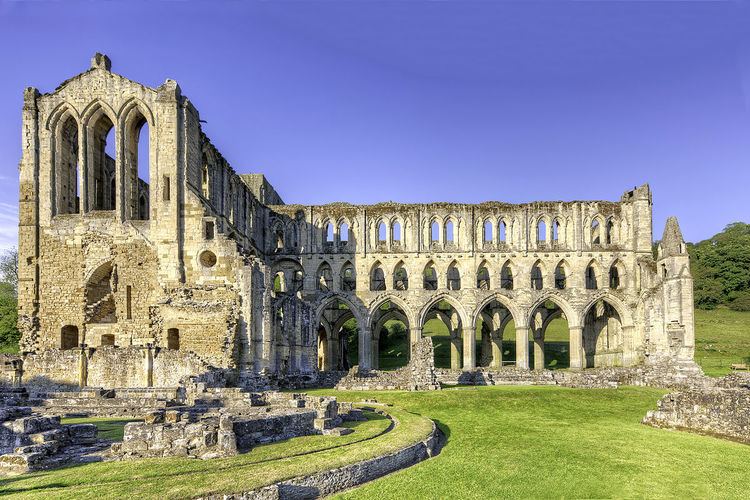Disestablished 1538 Architectural style Gothic architecture | Established 1132 Opened 1132 Phone +44 370 333 1181 | |
 | ||
Similar Helmsley Castle, Byland Abbey, Duncombe Park, Rievaulx Terrace, North York Moors Profiles | ||
Bebop drone flight around rievaulx abbey north yorkshire
Rievaulx Abbey /riːˈvoʊ/ ree-VOH is a former Cistercian abbey in Rievaulx, near Helmsley in the North York Moors National Park, North Yorkshire, England. Headed by the Abbot of Rievaulx, it was one of the wealthiest abbeys in England until it was dissolved by Henry VIII of England in 1538. Its ruins are a tourist attraction, owned and maintained by English Heritage.
Contents
- Bebop drone flight around rievaulx abbey north yorkshire
- Rievaulx abbey north yorkshire
- Foundation
- Financial prosperity
- Dissolution
- References
Rievaulx abbey north yorkshire
Foundation
Rievaulx Abbey was founded in 1132 by twelve monks from Clairvaux Abbey as a mission for the colonisation of the north of England and Scotland. The first abbot, St William I, started construction in the 1130s. During the 1150s, Abbot Aelred expanded the buildings. It was the first Cistercian abbey in the north of England. With time it became one of the great Cistercian abbeys of Yorkshire, second only to Fountains Abbey in fame.
Its remote location was ideal for the Cistercians, whose desire was to follow a strict life of prayer and self-sufficiency with little contact with the outside world. The patron, Walter Espec, settled another Cistercian community, founding Wardon Abbey in Bedfordshire on unprofitable wasteland on one of his inherited estates.
Financial prosperity
The abbey lies in a wooded dale by the River Rye, sheltered by hills. The monks diverted part of the river several yards to the west in order to have enough flat land to build on. They altered the river's course twice more during the 12th century. The old course is visible in the abbey's grounds. This is an illustration of the technical ingenuity of the monks, who over time built up a profitable business mining lead and iron, rearing sheep and selling wool to buyers from all over Europe. Rievaulx Abbey became one of the greatest and wealthiest in England, with 140 monks and many more lay brothers. It received grants of land totalling 6,000 acres (24 km²) and established daughter houses in England and Scotland.
By the end of the 13th century the abbey had incurred debts on its building projects and lost revenue due to an epidemic of sheep scab (psoroptic mange). The ill fortune was compounded by raiders from Scotland in the early 14th century. The great reduction in population caused by the Black Death in the mid-14th century made it difficult to recruit new lay brothers for manual labour. As a result, the abbey was forced to lease much of its land. By 1381 there were only fourteen choir monks, three lay brothers and the abbot left at Rievaulx, and some buildings were reduced in size.
By the 15th century the Cistercian practices of strict observance according to Saint Benedict's rule had been abandoned in favour of a more comfortable lifestyle. The monks were permitted to eat meat, and more private living accommodation was created for them, and the abbot had a substantial private household in what had once been the infirmary.
Dissolution
The abbey was dissolved by King Henry VIII in 1538. At that time there were reported to be 72 buildings occupied by an abbot and 21 monks, attended by 102 servants, with an income of £351 a year. The abbey owned a prototype blast furnace at Laskill, producing cast iron as efficiently as a modern blast furnace.
Henry ordered the buildings to be rendered uninhabitable and stripped of valuables such as lead. The site was granted to the Earl of Rutland, one of Henry's advisers, until it passed to the Duncombe family.
In the 1750s Thomas Duncombe III beautified his estate by building the terrace with two Grecian-style temples. They are in the care of the National Trust. The abbey ruins are in the care of English Heritage.
When awarded a life peerage in 1983, former Prime Minister Harold Wilson, a Yorkshireman, adopted the title Baron Wilson of Rievaulx.
